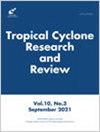台风科学与人工智能的结合:基于物理和数据驱动范式的桥梁圆桌会议
IF 4.1
4区 地球科学
Q3 METEOROLOGY & ATMOSPHERIC SCIENCES
引用次数: 0
摘要
本文总结了第21届中国热带气旋研讨会(NWTC-XXI, 2025年4月16-18日,中国长沙)的“人工智能+台风”会议及其附属圆桌论坛,重点介绍了人工智能技术在台风监测、预报和影响评估方面的最新进展。以及最先进的人工智能天气预报(AIWP)模型与传统的基于物理的数值天气预报(NWP)模型的深度融合。综合圆桌论坛的主要见解,强调人工智能模型在台风预报中的优势、局限性和未来发展方向。从前瞻性的角度来看,我们应该准备好迎接新兴的人工智能研究(AI4R)范式,以推动台风科学和技术的发展。本文章由计算机程序翻译,如有差异,请以英文原文为准。
Typhoon science meets artificial intelligence: A roundtable on bridging physics-based and data-driven paradigms
This paper summarizes the ‘Artificial Intelligence (AI) + Typhoon’ session and a subordinated roundtable forum at the 21st China National Workshop on Tropical Cyclones (NWTC-XXI, 16–18 April. 2025, Changsha China), highlighting recent advances in AI techniques for typhoon monitoring, forecasting, and impact assessment, as well as the deep integration of state-of-the-art artificial-intelligence weather prediction (AIWP) models with traditional physics-based numerical weather prediction (NWP) models. Key insights from the round-table forum are synthesized, emphasizing the strengths, limitations, and future development directions for AI models in typhoon forecasting. As a forward-looking perspective, we should be ready for embracing the emerging AI for research (AI4R) paradigm to advance typhoon science and technology.
求助全文
通过发布文献求助,成功后即可免费获取论文全文。
去求助
来源期刊

Tropical Cyclone Research and Review
METEOROLOGY & ATMOSPHERIC SCIENCES-
CiteScore
4.60
自引率
3.40%
发文量
184
审稿时长
30 weeks
期刊介绍:
Tropical Cyclone Research and Review is an international journal focusing on tropical cyclone monitoring, forecasting, and research as well as associated hydrological effects and disaster risk reduction. This journal is edited and published by the ESCAP/WMO Typhoon Committee (TC) and the Shanghai Typhoon Institute of the China Meteorology Administration (STI/CMA). Contributions from all tropical cyclone basins are welcome.
Scope of the journal includes:
• Reviews of tropical cyclones exhibiting unusual characteristics or behavior or resulting in disastrous impacts on Typhoon Committee Members and other regional WMO bodies
• Advances in applied and basic tropical cyclone research or technology to improve tropical cyclone forecasts and warnings
• Basic theoretical studies of tropical cyclones
• Event reports, compelling images, and topic review reports of tropical cyclones
• Impacts, risk assessments, and risk management techniques related to tropical cyclones
 求助内容:
求助内容: 应助结果提醒方式:
应助结果提醒方式:


